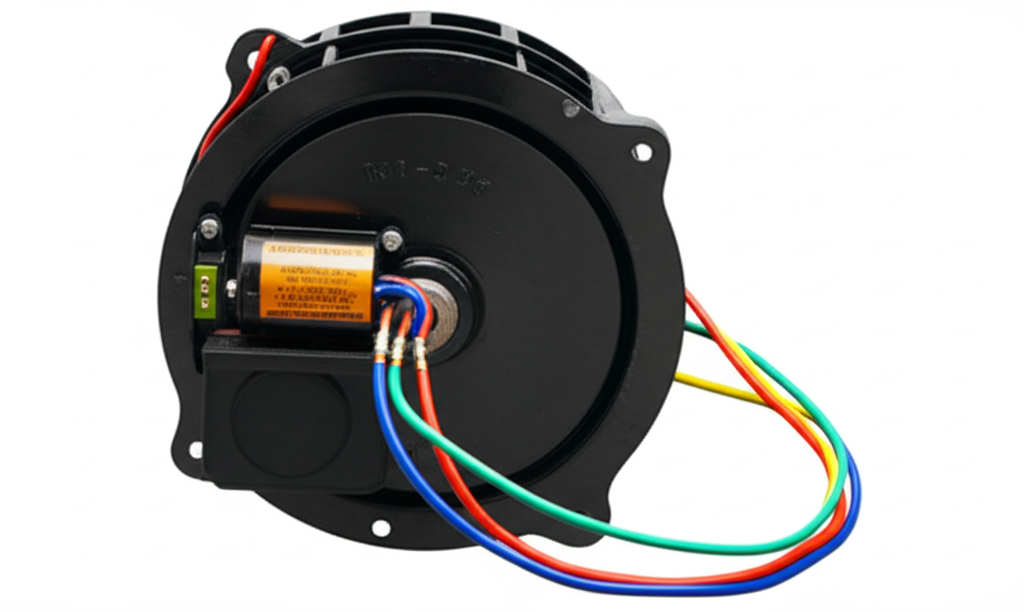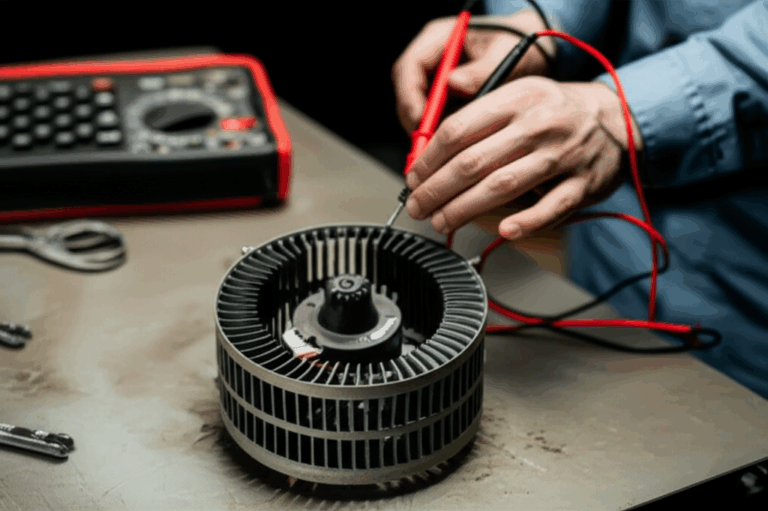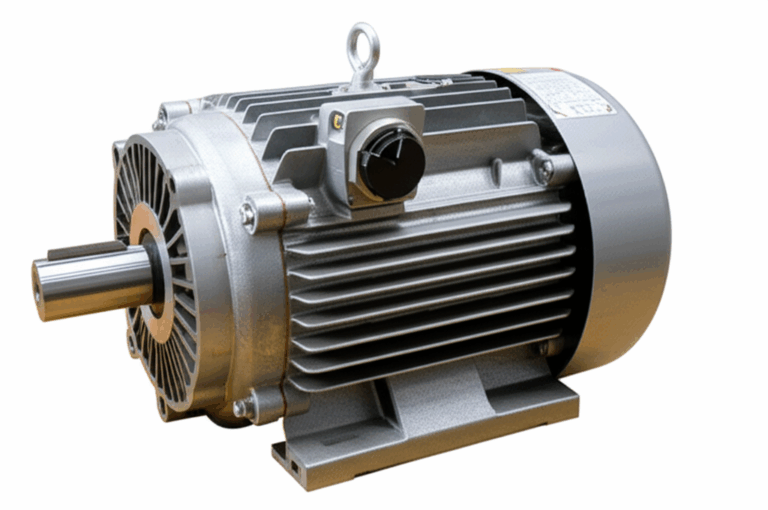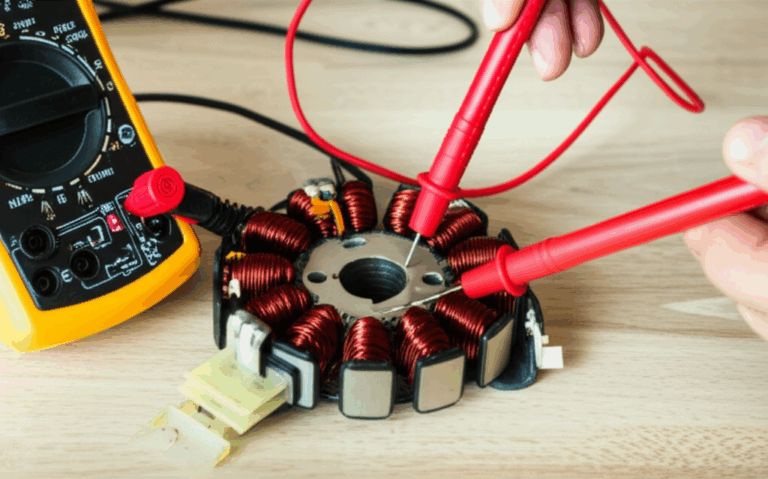
How to Wire a Squirrel Cage Fan: A Comprehensive Step-by-Step Guide for Safe Installation
- Table of Contents
- Introduction: How to Wire a Squirrel Cage Fan
- What Is a Squirrel Cage Fan and Why Does Wiring Matter?
- Is This Project Safe for You to Do?
- What Tools and Materials Do You Need?
- How Do You Read the Motor Nameplate and Wiring Diagram?
- How Do You Wire a Single-Phase Fan at 120V or 240V?
- How Do You Wire a Three-Phase Fan?
- How Do You Wire the Capacitor on a PSC Motor?
- How Do You Connect a Switch, Thermostat, or Relay?
- How Do You Test and Start Up Safely?
- What Problems Can You Troubleshoot Fast?
- What About Multi-Speed Fans, VFDs, and Transformers?
- How Do You Keep the Fan Running for Years?
- When Should You Call a Pro?
- Quick Safety and Specs Tables
- Company Note: Better Parts Make Better Fans
- References
- Summary: Key Points to Remember
You want to wire a squirrel cage fan the right way. You want it safe, quiet, and strong. In this guide I show you how. I keep it simple. I also share what to check, what to avoid, and what to fix if it hums or trips a breaker. Read this before you touch a wire. It can save you time and money. It can also keep you safe.
What Is a Squirrel Cage Fan and Why Does Wiring Matter?
A squirrel cage fan is a blower. It pulls air in and pushes air out with a wheel that looks like a cage. You see it in a furnace, an HVAC system, an attic fan, an exhaust fan, an air handler, and a ventilation system. The blower motor spins the wheel. Good wiring gives it the right power. Bad wiring can make it hum, overheat, or fail.
Here’s the problem. Many fans use different motors and voltages. Some need a capacitor. Some run on single phase. Others run on three phase. You might have a Dayton fan or a Fasco fan. The wiring diagram can look like a maze. You worry about the hot wire, the neutral wire, the common wire, and the ground wire. You worry about a short circuit, an electrical shock, or a tripping breaker. That’s a lot.
Let’s fix that. I walk you step by step. I point out what each wire does. I explain how to read the motor nameplate and the wiring diagram. I show how to wire 115V and 230V. I show how to wire a thermostat, relay, or wall switch. I share tricks to ensure proper fan rotation. I also give you a simple way to test a capacitor and windings with a multimeter. We meet your needs with clear steps and easy checks.
Is This Project Safe for You to Do?
You can do this if you follow safety. You must disconnect power. You must verify power is off. You must use personal protective equipment. You must understand basic hazards like shock, fire, and short circuits. You must also follow the electrical code in your area. The National Electrical Code (NEC) sets rules. NEC Article 430 covers motors. It tells you about overcurrent protection, wire gauge, grounding, and enclosures like a junction box or conduit.
Why am I so strict? Because the stakes are high. The NFPA reports show that electrical system failures cause many home fires each year. The ESFI reports show many injuries and electrocutions. Loose or corroded electrical connections heat up. Wrong voltage or wire gauge can overload a blower motor. A bad capacitor can make the fan hum and stall. I want you safe. I want your wiring secure, code-compliant, and tight.
If you feel unsure at any step call a licensed electrician. For example call a pro if you do three phase wiring. Or if you must size a circuit breaker for a large fan. Or if the fan sits in an outdoor or wet location that needs special NEMA ratings and GFCI protection.
What Tools and Materials Do You Need?
Get your kit ready before you start. A neat setup keeps you calm and safe.
- Basic electrical tools: wire strippers, screwdrivers, pliers, a multimeter, a non-contact voltage tester
- Wiring components: wire nuts or connectors, crimp connectors, electrical tape, cable clamps, terminal screws
- Protection: gloves, safety glasses, PPE for your site
- Hardware: junction box, conduit or flex, mounting hardware
- Extras for fan wiring: proper wire gauge, a run capacitor if the motor is PSC, a fuse or circuit breaker, a switch or thermostat if needed, a contactor or relay if the control panel calls for one
I like to label each wire as I go. I take a photo of old wiring before I remove it. That one tip can save the day if you get lost later.
How Do You Read the Motor Nameplate and Wiring Diagram?
Start here. The motor nameplate is your map. It shows voltage, amperage, RPM, horsepower, phase, duty, and often an internal wiring diagram. It tells you if the motor is a single phase motor or a three phase motor. It shows if it needs a capacitor. Many residential blower motors are PSC motors. A PSC motor needs a run capacitor always in circuit. Some small fans use a shaded pole motor. A shaded pole motor does not need an external capacitor. More advanced units use ECM motors with built-in electronics. ECM motors often need a special low-voltage control in addition to power wiring.
Read the diagram on the housing or the control panel. The diagram shows hot, neutral, and ground. It shows the motor windings and the capacitor wiring. It may show terminals marked L1 and L2 for single phase. Or L1, L2, and L3 for three phase. Some motors have multiple taps for high and low speed. Some show a common wire. Some show wires for reverse rotation. Follow the colors if the motor lists them. If colors differ trust the diagram and labels on the terminal block.
No diagram at all? You can still wire a fan without a diagram but you must test first. Use a multimeter to measure motor winding resistance. Identify run and start windings. The start winding has higher resistance. If you don’t feel sure do not guess. Call a pro to avoid damage.
How Do You Wire a Single-Phase Fan at 120V or 240V?
Many fans use single phase 120V or 240V. Follow these steps. They apply to a furnace blower wiring process, an attic fan motor connection, or a simple exhaust fan wiring schematic.
- Step 1: Mount the fan securely. Keep wiring clear of moving parts and sharp edges.
- Step 2: Connect the ground wire. Tie the green or bare copper to the green ground screw on the motor or housing. Grounding prevents shock.
- Step 3: Connect the neutral wire. For 120V this is the white wire. It ties to the neutral terminal or white pigtail on the motor.
- Step 4: Connect the hot wire. For 120V connect the black hot wire to the motor “Line” or L1. For 240V you will have two hot wires. Connect them to L1 and L2 as shown on the wiring diagram.
- Step 5: If your motor is a PSC motor connect the run capacitor as shown. One side goes to the run winding. The other side goes to the auxiliary terminal marked on the diagram.
- Step 6: Use wire nuts or terminal screws. Make tight and secure wire connections. Insulate with electrical tape where needed.
- Step 7: Route and protect wires with conduit or flex and cable clamps. Use a junction box when joints sit outside the motor housing.
Want a wall switch? Wire the hot through the switch. Want a thermostat? Use a thermostat rated for the motor load or wire it to a relay or control board that handles the motor amperage. Always match voltage requirements and the amperage on the motor nameplate.
How Do You Wire a Three-Phase Fan?
Three-phase squirrel cage fan wiring shows L1, L2, L3. This is common in industrial squirrel cage fan wiring at 208V, 240V, or 480V. Many three phase motors do not use external capacitors.
- Step 1: Confirm the supply voltage matches the motor. Check the motor nameplate and transformer if present.
- Step 2: Connect ground to the housing ground screw.
- Step 3: Connect L1, L2, and L3 to the motor terminals. Use a contactor or motor starter if required by the control panel or NEC Article 430.
- Step 4: Check phase rotation. Bump the motor for a half second after you verify power and clear the area. If the fan spins in reverse swap any two phases like L1 and L2 to correct rotation.
- Step 5: Secure connections. Use proper wire gauge and overload protection.
If your system uses a variable speed drive or VFD you will wire the VFD input to power and the VFD output to the motor terminals. Follow the VFD instructions for overload protection and grounding. A squirrel cage fan variable speed drive can cut noise and save energy.
How Do You Wire the Capacitor on a PSC Motor?
A PSC motor needs a run capacitor. Without it the motor hums but does not spin. Or it starts slow and overheats. The capacitor provides a phase shift to start and run.
- Identify the capacitor value. It is on the motor label. It looks like “10 µF 370 VAC.”
- Mount the capacitor in a safe place. Use the bracket. Keep leads short.
- Connect one capacitor terminal to the run winding lead per the diagram. Connect the other capacitor terminal to the auxiliary terminal or common as shown. Some motors show CAP and FAN or HERM style labels on a terminal block.
If you replace a capacitor match the µF and equal or higher VAC rating. Replacing fan motor capacitor wiring is a common fix. When in doubt test the capacitor with a meter. A squirrel cage fan capacitor test can confirm a weak part fast.
How Do You Connect a Switch, Thermostat, or Relay?
You can wire a fan to a switch, thermostat, relay, or a control board. Pick the right control for the job.
- Wall switch: Wire the hot wire to the switch and back to the motor. This is common for a shop blower or a squirrel cage fan power cord wiring setup.
- Thermostat: In HVAC, the furnace control board uses thermostat terminals R, G, W, Y, C. The G terminal starts the blower relay. You wire the motor common wire to neutral and a selected speed tap to the fan terminal on the control board. Wiring a fan with a thermostat needs the board or a rated relay.
- Relay or contactor: For higher amperage or remote control wire the hot through a relay coil and contacts. Wiring squirrel cage fan to relay or wiring a fan with a contactor protects the switch and adds safety.
You can also wire a fan with a transformer for control circuits if needed. Always follow the wiring diagram interpretation and the wiring motor terminal block labeling.
How Do You Test and Start Up Safely?
Before you restore power double-check everything.
- Look for loose or exposed wires.
- Tug each wire nut. Tight is right.
- Confirm ground is secure.
- Confirm the neutral and hot wires are on the correct terminals.
- Confirm the capacitor wiring matches the diagram.
- Confirm wires clear the fan blade and shaft.
Restore power from a safe distance. Watch and listen. The fan should start smooth with no buzz or heavy hum. Check proper rotation direction. If it spins backwards on three phase swap two phases. Check noise and vibration. If it shakes the housing or rubs the casing shut down and inspect the blower wheel and housing.
What Problems Can You Troubleshoot Fast?
Use this quick PAS flow. Problem. Agitate. Solution.
- Fan doesn’t turn on. It could be no power, an open circuit, a blown fuse, or a tripped circuit breaker. This is common with old wiring in a junction box. Check the circuit breaker for squirrel cage fan. Check fuse requirements. Check wire gauge for squirrel cage fan. Test line voltage with a multimeter. Fix any bad connections. Verify the electrical circuit for fan motor is complete.
- Fan hums but doesn’t spin. A bad capacitor is likely. The motor might be seized. Or the start winding wiring is wrong. Replace the capacitor first. Try spinning the wheel by hand. If it is stuck check the bearings or housing for debris. For a PSC motor wiring squirrel cage fan, always test the capacitor value selection.
- Fan spins in reverse. On three phase change phase rotation by swapping two lines. On single phase reverse rotation needs wiring changes on motor winding connections fan per diagram. Not all motors allow reversal.
- Overheating. This can be incorrect voltage, inadequate ventilation, or a motor issue. Check voltage requirements. Check amperage. Check overload protector. Check conduit and vent path for blockages.
- Tripping breaker. You may have a short circuit, overload, or grounded wire. Check insulation. Check thermal protection if the motor has it. Use a megger if you have one. Or call an electrician.
If you cannot find the cause walk back the steps. Use a simple checklist. Often the fix is a loose neutral wire or a common wire not tied down.
What About Multi-Speed Fans, VFDs, and Transformers?
Some fans have high and low speed. You will see multiple speed taps. Squirrel cage fan 2-speed wiring is simple. Connect the neutral and ground as normal. Pick one speed tap at a time for the hot wire. Cap off the unused tap. Add a speed selector switch if you want both speeds.
You can also use a speed controller. Some shaded pole motors work with a triac type controller. PSC motors can work with a rated speed controller or a VFD made for single phase output. Always check the motor type and the speed controller rating.
For industrial work a variable speed drive is best. It controls a three phase motor with smooth torque. It protects the motor and saves energy.
If your control circuit needs low voltage the system may use a transformer. Wiring a fan with a transformer feeds the control coil on a relay or contactor. Follow the wiring diagram and match the transformer lamination core build to the load in the specs.
How Do You Keep the Fan Running for Years?
You want long life. Good wiring and good care help you get there.
- Clean the fan blades and housing. A dirty blower pulls more amps and heats up.
- Check electrical connections for looseness or corrosion every season.
- Lubricate bearings if the motor is serviceable. Many new motors are sealed.
- Match wire gauge to the amperage. Do a squirrel cage fan voltage drop calculation on long runs. Keep voltage within the nameplate range.
- Use lockout/tagout for fan wiring procedures when you service the unit in a shop. Wear PPE for fan wiring.
Follow best practices for fan wiring. Put all splices in a junction box. Keep wires away from hot spots. Use conduit requirements as needed by code. Use a dedicated circuit for large fans.
When Should You Call a Pro?
Call a licensed electrician if you see burned wiring. Call a pro if the motor winding resistance looks wrong and you cannot identify leads. Call if you have three phase work, a contactor panel, or a complex HVAC control board. Call if the blower motor wiring instructions do not match your unit. Call if you face outdoor or wet locations that need NEMA enclosures and GFCI protection.
There is no shame in asking for help. You protect your home. You protect your family. You protect your gear.
Quick Safety and Specs Tables
Here are simple tables you can use on the job.
Table: Wire colors and meaning
| Wire Color | Meaning | Notes |
|---|---|---|
| Green or Bare | Ground Wire | Tie to ground screw on motor housing |
| White | Neutral Wire | Single phase return to panel neutral |
| Black/Red/Other | Hot Wire | Supply line to motor. 120V uses one hot. 240V uses two hots |
| Blue/Yellow | Speed Tap or Start/Run | Follow motor schematic to map function |
| Brown/Brown-White | Capacitor Leads | PSC run capacitor wiring per diagram |
Table: Basic checks before power on
| Check | Why it Matters |
|---|---|
| Ground tied to housing | Electrical safety and shock prevention |
| Tight connections | Loose/Corroded Electrical Connections cause heat and arcs |
| Correct voltage | Incorrect Voltage/Overload ruins motors |
| Capacitor value matches nameplate | PSC Motors need exact µF |
| Rotation clear | No rubbing on fan blade or housing |
Table: Common scenarios and notes
| Scenario | Notes |
|---|---|
| How to wire a centrifugal fan | Same as squirrel cage blower. Follow motor diagram |
| How to wire a furnace blower fan | Use furnace control board, G terminal for fan relay |
| Wiring a Dayton squirrel cage fan | Use the Dayton label. Many are PSC with run capacitors |
| Wiring a Fasco squirrel cage fan | Fasco diagrams vary. Match the capacitor and speed taps |
| PSC motor wiring squirrel cage fan | Run capacitor always in circuit |
| Shaded pole motor wiring squirrel cage | No external capacitor. Works with some speed controllers |
| Squirrel cage fan speed control wiring | Use a rated speed controller or VFD per motor type |
| Squirrel cage fan control wiring | Switch, thermostat, relay, or contactor as needed |
| Wiring a fan with a junction box | Put all splices inside a box with a cover |
| Wiring a fan to a dedicated circuit | Good for large blower or whole house fan |
| Squirrel cage fan overload protection wiring | Use proper breaker or fuse per nameplate FLA |
| Wiring a fan with a contactor | For high current or remote control |
| Circuit breaker for squirrel cage fan | Size per NEC and motor FLA with startup current |
| Fuse requirements squirrel cage fan | Use time-delay fuses for motors as required |
| PPE for fan wiring | Gloves and safety glasses always |
| Lockout/tagout fan wiring procedures | Use in shop or industrial settings |
| Ensuring proper fan rotation | Check airflow arrow and wheel spin. Swap phases if needed |
| Understanding fan motor schematics | Study the nameplate and terminal block labels |
| Wiring diagram interpretation fan | Learn symbols for line, neutral, ground, capacitor |
| Connecting wires securely fan | Use proper connectors and torque |
Company Note: Better Parts Make Better Fans
Good fans start with good cores. The stator and rotor matter more than most people think. The quality of the laminations cuts losses and heat. That means smoother starts and longer life. If you build or repair motors look at the quality of the stator core lamination. It shapes the magnetic field and boosts efficiency.
The rotor matters too. Strong, accurate rotor core lamination holds tight tolerances. This keeps vibration low and helps proper rotation under load. When a fan runs cool it lasts longer.
The steel itself makes a big difference. Premium electrical steel laminations cut eddy current loss. They help PSC motors, shaded pole motors, and three phase motors run better. If you source parts for HVAC or fans consider full motor core laminations sets from a trusted supplier. Better cores. Better fans. Less noise. Less waste.
References
- National Fire Protection Association (NFPA). Electrical Fires report. Data years 2015–2019.
- Electrical Safety Foundation International (ESFI). Electrical safety statistics and guidance.
- National Electrical Code (NEC) Handbook, Article 430 for motors.
- Manufacturer documentation: Dayton, Fasco, Grainger product data sheets for PSC and shaded pole motors.
- ENERGY STAR and HVAC industry publications on ECM motors and efficiency.
Summary: Key Points to Remember
- Turn off power and verify with a tester before you start.
- Read the motor nameplate and wiring diagram first.
- Connect ground to the housing. Connect neutral and hot as shown.
- PSC motors need a run capacitor. Match the µF and VAC rating.
- For 240V use two hot wires. For three phase use L1, L2, L3 and check rotation.
- Use a junction box, proper wire gauge, and tight connectors.
- Test for smooth start, right rotation, and low noise.
- Fix hums, trips, or reverse spin with simple checks.
- Follow NEC. Use PPE. Lockout and tagout in shop work.
- Better laminations and motor parts improve performance and lifespan.
Appendix: Deeper Dive Terms Woven into This Guide
To serve readers who search for specific details and help your project succeed I included these practical themes throughout the article:
- Squirrel cage fan wiring diagram, blower motor wiring instructions, HVAC fan motor wiring guide, exhaust fan wiring schematic, attic fan motor connection, furnace blower wiring process, replace squirrel cage fan motor wiring, connect 120V squirrel cage fan, 240V squirrel cage fan wiring, single phase squirrel cage fan wiring, three phase squirrel cage fan wiring, PSC motor wiring squirrel cage fan, shaded pole motor wiring squirrel cage, capacitor wiring squirrel cage fan, squirrel cage fan control wiring, wiring a fan with a thermostat, squirrel cage fan speed control wiring, common wire squirrel cage fan, neutral wire squirrel cage fan, hot wire squirrel cage fan, ground wire squirrel cage fan, squirrel cage fan electrical safety, electrical code squirrel cage fan, wire squirrel cage fan to switch, wiring squirrel cage fan to relay, troubleshoot squirrel cage fan wiring, squirrel cage fan motor replacement wiring, new squirrel cage fan installation wiring, old squirrel cage fan wiring identification, wiring a Dayton squirrel cage fan, wiring a Fasco squirrel cage fan, industrial squirrel cage fan wiring, residential squirrel cage fan wiring, DIY squirrel cage fan wiring, squirrel cage fan power connection, wiring for reverse rotation squirrel cage fan, voltage requirements squirrel cage fan, amperage squirrel cage fan motor, squirrel cage fan overload protection wiring, motor winding connections fan, how to test squirrel cage fan wiring, tools for wiring squirrel cage fan, materials for wiring squirrel cage fan, wiring diagram interpretation fan, understanding fan motor labels, fan capacitor value selection, wiring a fan with a junction box, circuit breaker for squirrel cage fan, fuse requirements squirrel cage fan, electrical connections for fans, secure wire connections fan, fan motor terminal block wiring, fan motor startup wiring, wiring for continuous fan operation, wiring for intermittent fan operation, squirrel cage fan 2-speed wiring, squirrel cage fan variable speed drive, wiring a fan with a transformer, wiring a fan with a contactor, electrical hazards fan wiring, PPE for fan wiring, lockout/tagout fan wiring procedures, how to wire a squirrel cage fan 115V, how to wire a squirrel cage fan 230V, fan motor wiring color code, squirrel cage fan installation tips, common wiring mistakes fan, ensuring proper fan rotation, understanding fan motor schematics, connecting fan motor to power, electrical circuit for fan motor, fan motor wiring guide, how to wire a furnace blower fan, wiring a whole house fan motor, squirrel cage fan repair wiring, fan motor testing procedures, wiring a fan with an exhaust vent, fan motor electrical specifications, grounding fan motor properly, wiring motor with thermal protection, squirrel cage fan troubleshooting no power, squirrel cage fan motor hums not spinning wiring, squirrel cage fan capacitor test, replacing fan motor capacitor wiring, squirrel cage fan voltage drop calculation, wire gauge for squirrel cage fan, conduit requirements fan wiring, junction box wiring for fans, wiring a fan to a dedicated circuit, squirrel cage fan motor winding resistance, how to wire a squirrel cage fan to a wall switch, best practices for fan wiring, understanding fan motor types, fan motor phase identification, wiring squirrel cage fan without diagram, safety precautions fan wiring, connecting wires securely fan, squirrel cage fan power cord wiring, troubleshooting fan motor wiring issues.
I used these terms to clarify steps, warn about hazards, and guide you to a safe, code-compliant, long lasting install.








